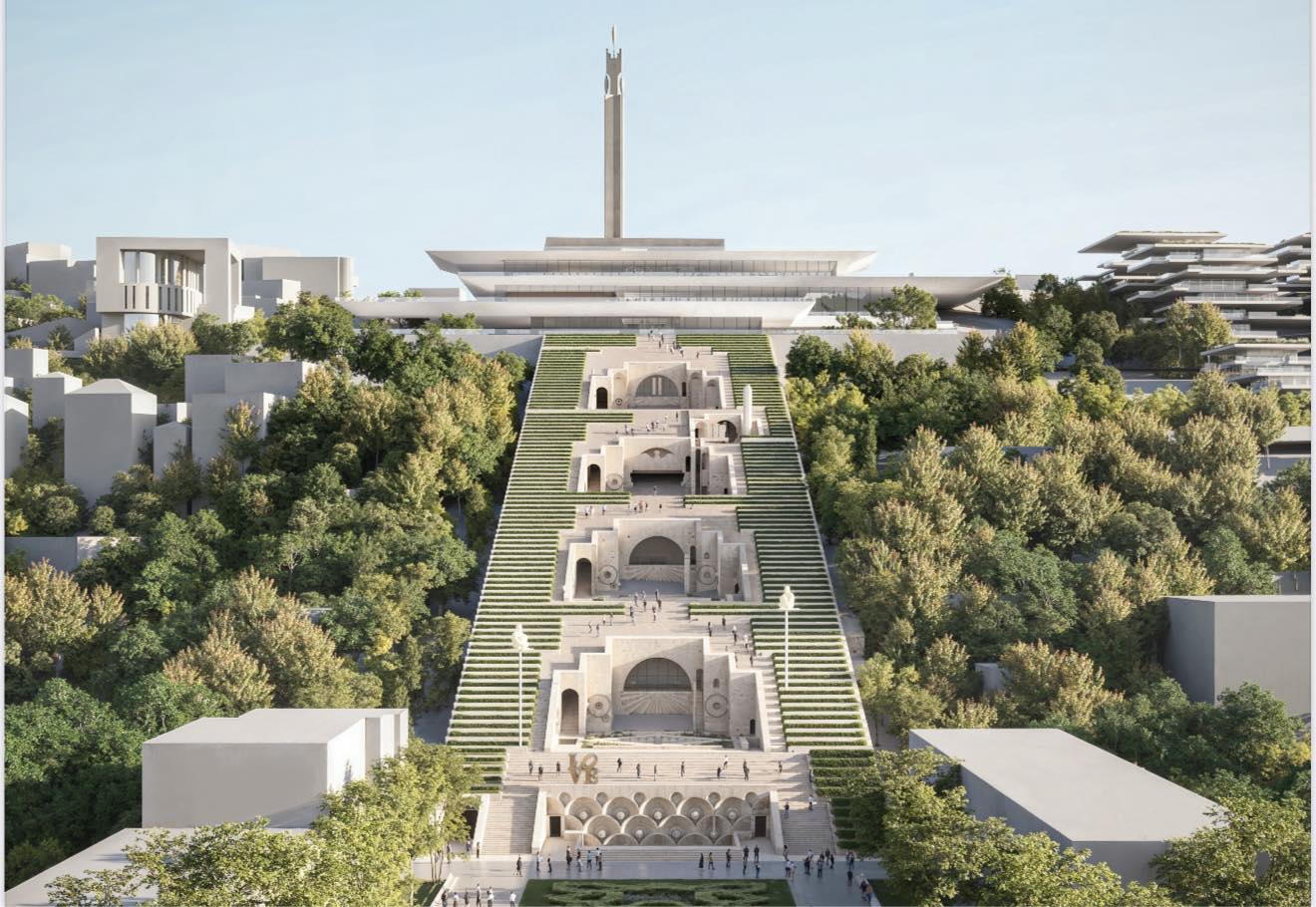On October 23, the Armenian government approved an investment project worth about 20 billion drams (approximately $53 million) to complete the long-unfinished upper section of Yerevan’s iconic Cascade complex. The large-scale project, set to be implemented by GTB Development over the next four to five years, envisions transforming the site into a major cultural and recreational hub, featuring a 1,000-seat concert hall, a modern art gallery, landscaped public spaces, and a multifunctional complex integrated into the city’s architectural environment.
Presenting the proposal at a Cabinet meeting, Yerevan Mayor Tigran Avinyan said the initiative aims to give the Cascade a complete and finished look while restoring its original architectural vision. According to Avinyan, the urban development project will also ensure a connection between Yerevan’s downtown and the Memorial Complex dedicated to the 50th anniversary of the October Revolution, reviving the conceptual idea of architects Alexander Tamanyan and Jim Torosyan.
Under the project, the upper section of the Cascade will feature a 1,000-seat concert hall, allowing Yerevan to host internationally renowned artists and ensembles. The plan also includes the construction of a spacious modern art gallery, where exhibitions by world-famous painters will be organized. Partnerships will be established with prominent galleries abroad, contributing to the development of Yerevan’s cultural life and the growth of tourism. The project envisions creating a new cultural and recreational hub covering approximately 30,000 square meters.
The adjacent 4.6-hectare plot will be granted to the development company to construct a multifunctional complex that will integrate harmoniously into the surrounding architectural environment.
In March 2024, Avinyan announced that the upper section of Yerevan’s Cascade complex—left unfinished since the Soviet era—had been returned to the city. The site had previously been allocated to the Cafesjian Museum Foundation for public development, but the project was delayed and remained incomplete. Following its return, modernization works were announced to bring the complex to completion.
Avinyan recalled that the site, a large pit at the upper end of the Cascade, had remained untouched since around 2007, describing it as a “decades-long unresolved issue.” The municipality subsequently launched a new architectural competition to select the best proposal for completing the project.
The project was submitted for public discussion last year and approved by residents through the “Active Citizen” platform.
According to Avinyan, the minimum investment requirement set by the city was about 13 billion drams, but the winning company, G.T.B Development, committed to investing more than 20 billion drams. In addition, the developer will pay approximately 10.449 billion drams, corresponding to the cadastral value of the land, and will carry out landscaping and green development work in the area.
Independent evaluators estimated the market value of the 4.6-hectare land at around 22.2 billion drams, while the total expected financial outcome for the city, including land and investment payments, is projected to reach about 30.7 billion drams.
The project will be implemented through a competitive but non-standard process with strict oversight mechanisms. The territory will remain mortgaged until all payments are completed, and the investor is required to make a 30% advance payment. If construction in the central section is delayed by more than nine months, the company may lose its development rights.
The Cascade is a massive stair-shaped complex that connects downtown Yerevan with Victory Park. The project first appeared in Alexander Tamanyan’s 1920s master plan and was redesigned in the 1970s by architects Jim Torosyan, Sargis Gurzadyan, and Aslan Mkhitaryan. Construction began in 1980 but was halted following the 1988 Spitak earthquake and the collapse of the Soviet Union.
In 2002, the Armenian government launched plans to renovate the existing sections of the Cascade and complete its unfinished areas. The initiative was carried forward by the Gerard Cafesjian Museum Foundation, established by Armenian-American philanthropist Gerard Cafesjian, who worked with architect David Hotson to bring the museum’s design to life. The Cafesjian Center for the Arts opened in 2009.


